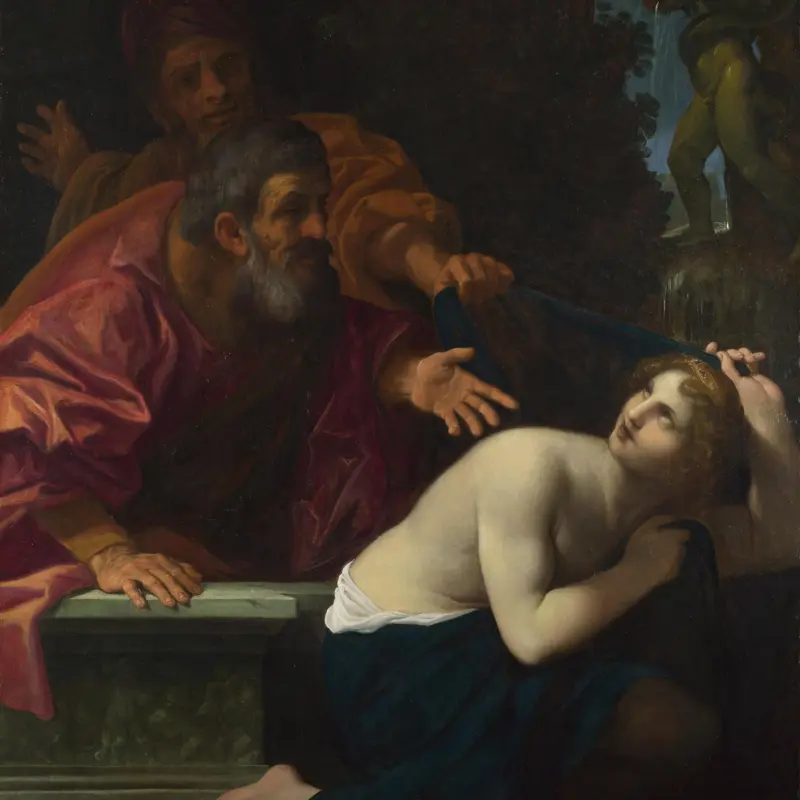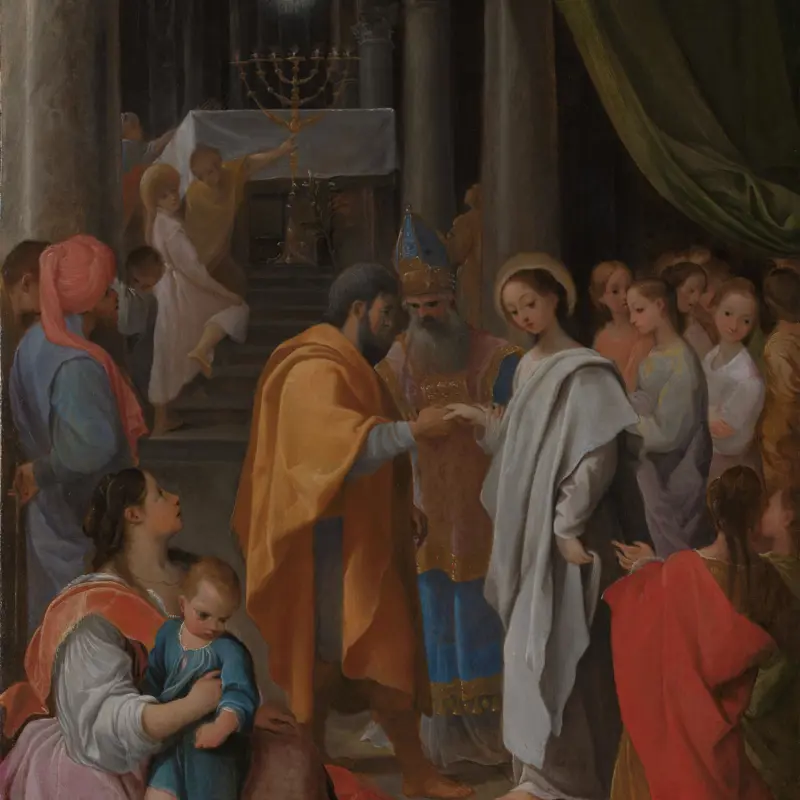Ludovico Carracci, 'The Agony in the Garden', about 1590
About the work
Overview
This is the night before the Crucifixion. Jesus, knowing he will be betrayed and die on the Cross, has taken Peter, James and John to watch over him while he prays, but they have fallen asleep. According to the Gospel of Luke, Christ asked God to ‘remove this cup from me’, and an angel appeared to comfort him. Here, it bears the cup from which he will have to drink, and points to a vision of the Instruments of the Passion – the cross, the crown of thorns, the column at which Christ was flagellated, the sponge soaked in vinegar he was given to drink and the shaft of the spear that pierced his side. In the background Judas leads the soldiers coming to arrest Christ into the Garden of Gethsemane: one carries a lamp, the light of which gleams on their armour.
Ludovico Carracci produced several small paintings of this subject for private devotion. This is the earliest surviving version.
Key facts
Details
- Full title
- The Agony in the Garden
- Artist
- Ludovico Carracci
- Artist dates
- 1555 - 1619
- Date made
- about 1590
- Medium and support
- oil on canvas
- Dimensions
- 100.3 × 114.3 cm
- Acquisition credit
- Presented by the Trustees of Sir Denis Mahon's Charitable Trust through the Art Fund, 2013
- Inventory number
- NG6624
- Location
- Not on display
- Collection
- Main Collection
- Frame
- 18th-century English Frame
Provenance
Additional information
This painting is included in a list of works with incomplete provenance from 1933–1945; for more information see Whereabouts of paintings 1933–1945.
Text extracted from the ‘Provenance’ section of the catalogue entry in Gabriele Finaldi and Michael Kitson, ‘Discovering the Italian Baroque: The Denis Mahon Collection’ (exh. cat. National Gallery, London, 1997), London 1997 and supplemented by the National Gallery’s Annual Report, ‘The National Gallery: Review of the Year, April 2012 – March 2013’; for further information, see the full catalogue entry.
Bibliography
-
1963B. Nicolson, 'Denis Mahon', in D. Cooper (ed.), Great Private Collections, London 1963, pp. 116-25
-
1965F.J. Cummings, Art in Italy 1600-1700 (exh. cat. The Detroit Institute of Fine Arts, 6 April - 9 May 1965), Detroit 1965
-
1973C. Whitfield, England and the Seicento (exh. cat. Agnew’s (Thos. Agnew & Sons Ltd), 6 November - 7 December 1973), London 1973
-
1974R.E. Spear, 'L'Inghilterra ed il Seicento', Arte illustrata, VII/58, 1974
-
1993A. Emiliani, Ludovico Carracci (exh. cat. Museo Civico Archeologico-Pinacoteca Nazionale, 25 September - 12 December 1993; Kimbell Art Museum, 22 January - 10 April 1994), Bologna 1993
-
1994D.S. Pepper, 'Ludovico Carracci: A New Sequence of His Works and Additions to His Catalogue', Atti e Memorie dell'Accademia Clementina, n.s., 33-34, 1994, pp. 49-67
-
1997G. Finaldi et al., Discovering the Baroque: The Denis Mahon Collection (exh. cat. The National Gallery, 26 February - 18 May 1997), London 1997
-
2001
C. Baker and T. Henry, The National Gallery: Complete Illustrated Catalogue, London 2001
-
2014National Gallery, The National Gallery: Review of the Year, April 2012 - March 2013, London 2014
About this record
If you know more about this work or have spotted an error, please contact us. Please note that exhibition histories are listed from 2009 onwards. Bibliographies may not be complete; more comprehensive information is available in the National Gallery Library.


